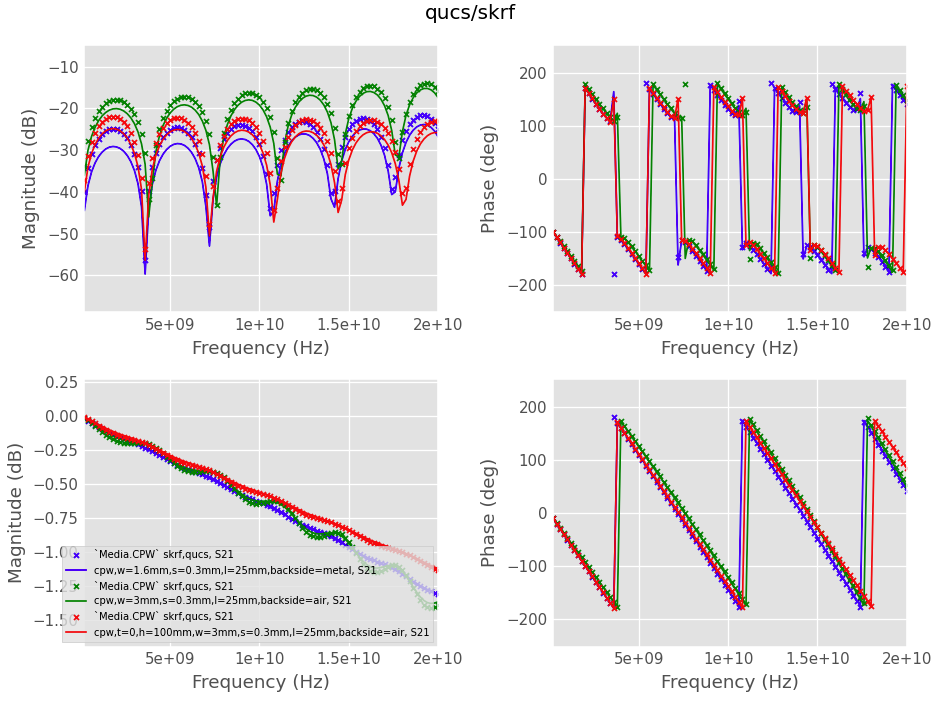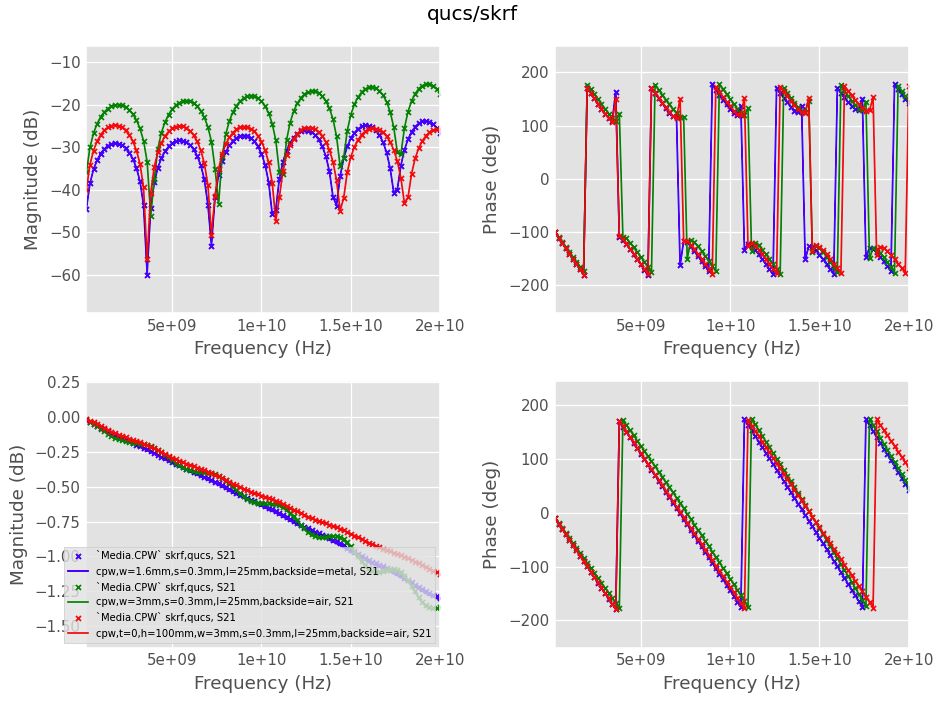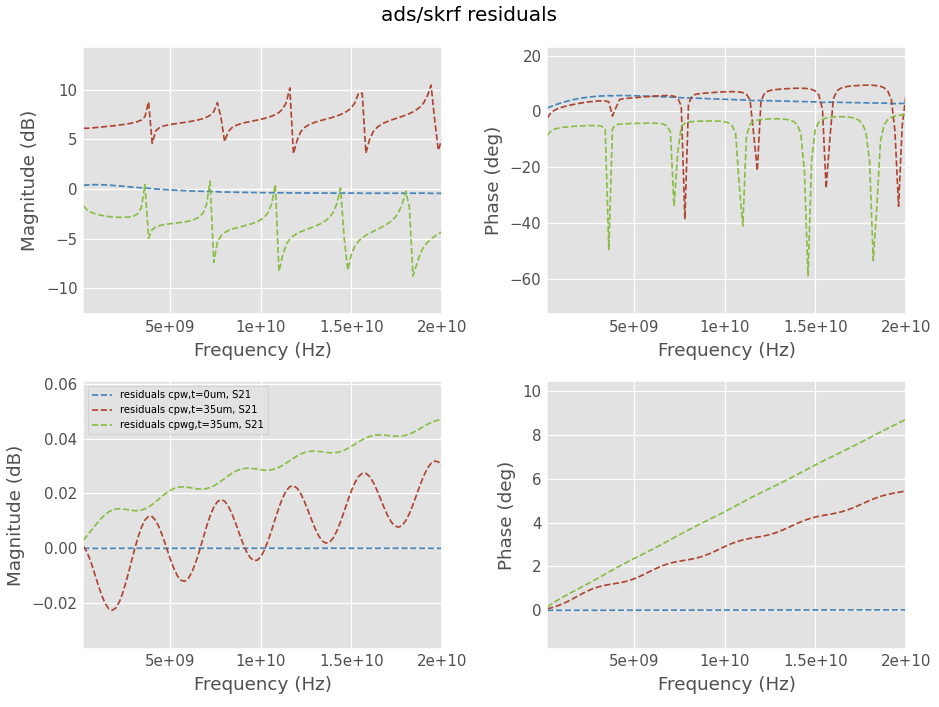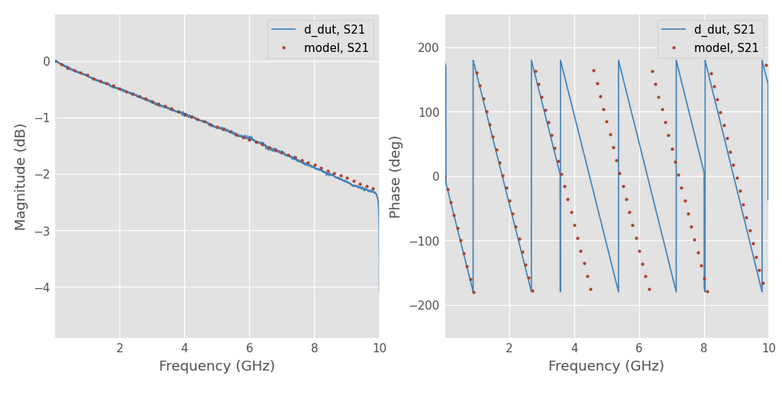-
-
Notifications
You must be signed in to change notification settings - Fork 264
New issue
Have a question about this project? Sign up for a free GitHub account to open an issue and contact its maintainers and the community.
By clicking “Sign up for GitHub”, you agree to our terms of service and privacy statement. We’ll occasionally send you account related emails.
Already on GitHub? Sign in to your account
CPW Media impedance does not account for strip thickness #667
Comments
|
After looking on Qucs CPW page and Qucsator CPW source, there is a big discrepancy between them. Qusator use equations that account from the substrate height In ADS simulator there is even two distinct components : CPW and CPWG Both Qucs and ADS correct impedance and effective permittivity for strip thickness. |
|
More comparison between Qucs and current
|
|
If I understand #665 (comment) correctly, this issue is not yet resolved. |
|
indeed. Was closed automatically. |
|
@JAnderson419 would you be interested in this quest ? CPWG w = 1.6mm, s = 0.3mm, t = 35um, h = 1.55mm, t = 35um, ep_r = 4.5 (frequency invariant), tand = 0.018, rho = 1.7e-8 ohm/m, 0.2GHz - 20 GHz, 100pts |
@JAnderson419 are you in for this or shall we leave things as is, hoping for the best ? |
|
My apologies @mhuser - I was out sick last week and missed this when catching up on emails. I'm happy to help. Thank you for all the work you are putting into these comparisons between tools! |
|
@JAnderson419 First of all, I hope you are getting better or that you will get well soon! |
|
I also had to remove frequency dispersion of impedance and permittivity, which are not included into ads model (based on doc) The agreement with ADS is quite poor unless thickness = 0. For this case :
The computation to account for non-zero thickness must be different. |
|
@JAnderson419 Could you run a last simulation with CPWG and all parameters kept equals but metal thickness = 0 ? |
|
Here you are. |
Thank you a lot @JAnderson419 ! |
|
Above is a comparison ADS / QUCS for coplanar waveguide with/without ground backing and zero thickness. The solid curves are s-parameters generated by these simulators while dots are simulated with The computation of static impedance and effective relative permittivity are the same for the two simulators for zero thickness. The difference between these simulators are:
|
|
For |
|
For coplanar waveguide with/without conductor backing, The agreement with ADS is poor for insertion loss magnitude, which mean the computed static impedance is slightly different. QUCS is using an empirical formula from Gupta, Garg, Bahl, Bhartia, Microstrip Lines and Slotlines, 2nd ed.Artech House, Inc., 1996. ADS claim to use a correction from Cohn, Thickness Corrections for Capacitive obstacles and Strip Conductors, IRE Trans. on Microwave Theory and Techniques, Vol. MTT-8, November 1960, pp. 638-644. However, by reading last paper, there is no ready-to use thickness correction inside. After stepping back, reverse-engineering ADS thickness correction would need simulations with various thickness and... is probably not useful because it does not sounds like a standard and widely used solution. By default, my proposition is to just keep the same thickness correction as QUCS. |











When writing #665 , we observed that
Media.CPWstrip thicknesstis not used to correct the characteristic impedance.Currently, it only affect the conductor loss.
Qucs project provide equations and references to correct the impedance and effective permittivity to account for strip thickness.
The text was updated successfully, but these errors were encountered: